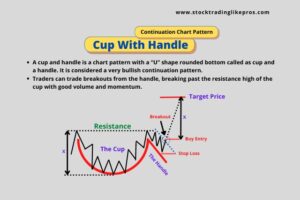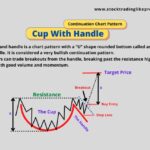Traders focused a lot of their time & efforts in planning an Entry Strategy for any trade. But does traders pay equal consideration to Risk Reward ratio before any trade entry?
A lot of effort goes in research to choose the right stocks or analyze if their Trade Set Ups gives any entry signal. Traders also study Market Structure, News, Price/Volume action, Chart Patterns & more….
Novice traders do the above effectively but what they failed majorly is in the very important part of Risk Reward management.
If you ask any Pro Traders what is their most crucial activity of their trade, they will tell you – it is Risk & Money Management.
So, how can traders manage these risks?
Generally, what most traders ignore is the magnitude of risk they are taking in their trades. They ignore this and leads to quick drawdown.
What does risk mean here?
The risk here refers to the amount/percentage of your trading capital you put to risk when trade does not go in your favour.
As a trading rule, traders use stop loss to minimize the risk. Any good Entry Strategy should have a very good Exit (Stop Loss) Strategy when things do not go as per your plan.
Stop Loss is generally the basis on which you decide how much money you can risk if trade goes in opposite direction.
Setting the correct Stop loss price is key to avoid Entry Strategy failure.
So, where do I place my stop loss to minimize my risk?
This is a big dilemma every trader faces. If stop loss price is placed too tight, you get thrown out of the trade too quickly.
Or if your stop loss is very wide, you are risking more money in the trade if that trade becomes a loser.
To find out where to place the stop loss, this is where understanding of Risk Reward ratio is critical.
Risk to Reward Ratio
The risk/reward ratio measures the potential reward of a trade (after a sell off or short covering reaching your target price) to potential loss (if your stop loss is hit).
Generally, Pro Traders usually look for minimum of 1:2 Risk / Reward ratio for any Entry Strategy.
This is crucial for Pro traders to survive, avoid drawdown situation and make profits consistently from the market.
But Risk / Reward ratio can differ from individual to individual according to one’s risk appetite and aggressiveness.
Understandably, if I am looking for 1:2 Risk / Reward ratio, I should place my stop loss at half the price of my target price.
But can I do that for any trade I take?
No. I just can’t.
So, where exactly should my stop loss be placed?
Let’s understand Risk-Reward Ratio through the below example

In the above example, We can see an uptrend from the trendline connecting 3 swing points – A, B, C.
Here, we decided to go long as price hits 40 after pullback from Major Support at price 35. Target price is decided just below 60 where there is a Major Resistance.
Stop loss can be placed at 2 price levels – S1 (30 price point) & S2 (20 price point).
Let’s understand the Reward & Ratio in both cases.
- Risk Reward Ratio when Stop loss is S1
(Entry Price – Stop Loss S1) / (Target Price – Entry Price) = (40-30)/(60-40) = 1:2
- Risk Reward Ratio when Stop loss is S2
(Entry Price – Stop Loss S2) / (Target Price – Entry Price) = (40-20)/(60-40) = 1:1
So, Risk to Reward Ratio is favorable with 1:2 ratio when Stop loss is S1.
Does it mean S2 is not a good stop loss as Risk Reward ratio is 1:1?
No, in both cases of S1 & S2, stop loss minimizes the risk. Every trader has their own risk appetite and hence Risk / Reward ratio can differ from trader to trader.
What if we use stop loss far below S2?
That could be too wide a Stop loss and risking a good amount compared to Reward. Your Risk Reward ratio condition will not be met then.
We should definitely avoid that.
How do I decide my stop loss?
For a Swing Trader like me, it is very important to understand the price zones to decide my stop loss price for my Entry Strategy.
- Support & Resistance is one vital component of my trading to understand the major Demand and Supply zones for the stock. Stop loss is usually placed below Support and Resistance zones.
- Moving Averages and Trend lines are other market structures below or above which we can place Stop losses.
- Stop loss below Swing Points usually in Trending stock is also a good stop loss entry point. As explained in the above example, A is a right swing point to place stop loss under.
If I am going long on a trade, I want to put stop loss under the above demand zones as they are all minimum risk zones.
If the trade goes in other direction, chances of price going below support could be quite less because of the demand pressure in support zone.
Hence, I will be at a state of minimum risk in these trades then.
Is my Entry Strategy decided now basis just the stop loss decision?
Answer is no.
Once I decide the demand / supply zones and stop loss price, I cannot just blindly make any trade entry (to buy or short).
My trading set up could give very good entry signal but I cannot make my entry basis that only. Why?
Because, it could also happen that stop loss is not possible at my desired point – just below or above S&R, Moving Average, Trend lines etc..
The Supply/Demand Zones above or below which stop loss is placed could be too far away.
The stop loss would then be wider. Our criteria for Risk/Reward of 1:2 are not fulfilled then.
What should we do then?
Simple. we just move on with another trade. We shouldn’t take the risk at all on that trade.
Remember, there’s always another winning trade for you.
You can again say – I could use a tighter stop loss.
But there is also a good chance that your stop loss gets hit quickly if it is tight and you could get exited from the trade early
So, you need to decide on a stop loss which is not that tight nor very wide. It is not that easy. Any stop loss could be taken out early by Market Makers or advanced Traders.
There is no science behind it.
But as you get experienced in trading, you would also get better in your stop loss management.
One Suggestion: You can use ATR Indicator to give an idea of Stock’s volatility and hence decide the stop loss..
What else could decide my Entry Strategy?
We could check for Confluence of other signals like Candlestick. Doji or other Candlestick formations could help you take important entry decisions
To summarize, here’s what we could plan for a Good Entry Strategy with Risk Reward decisioning
Step-1: Analyse all Supply & Demands Zones near the current price.
The Supply & Demand Zones could be seen through
- Support & Resistances
- Moving Averages
- Trendlines
- Swing Points
- Fibonacci Retracement Levels
Step-2: If your trade decision is Buy, plan your entry price above the Demand Zone which you think will hold on.
Step-3: If your trade decision is Short, plan your entry below the Supply Zone which you think will hold on.
Step-4: Plan your Stop Loss price below Demand Zones for Buy Trade or above Supply Zones for Short Sell trade.
Ensure that it is not placed too closely to the Resistance & Support lines to avoid fade out.
At the same time, you need to ensure that stop loss is not placed far away as it will skew the Risk Reward Ratio you desire.
Step-5: Finalize on the Stop Loss placement by taking in consideration price volatility using ATR Indicator.
Step-6: Calculate the Risk / Reward ratio by taking your Target Price and Stop loss price.
If it is more than 1:2 Risk/Reward ratio, this is a good entry point.
Step-7: Additionally, check for confluence of your stop loss by checking the Candlestick below which stop loss is planned.
If it is a doji candle which indicates price rejection to below, my stop loss is confirmed for a good entry strategy with minimal risk.









